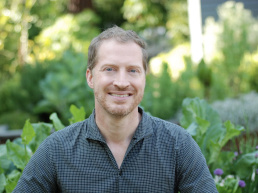The U.S. is a secular country whose foundation is greatly influenced by those who sought the freedom of religious practice. At the same time, religion gained a central role in society, and even in politics, identifying with one side of the political spectrum. A complex story, crucial to understand this country, explained by our guest this week of the Atlantic Talks.
Why do churches and religion have such a large influence in the United States, a secular state? How does the fundamentalist turn of some churches in the U.S. happen, since the 1950s, and what is their influence on the political life of the world’s largest economy? The weight of religion in American society is one of its fundamental characteristics, our guest this week is the ideal person to explain all of this to us.
Paulo Mendes Pinto specialized in the History of Ancient Religions and dedicates part of his work to studying the relationship between the State and religions. He is currently the coordinator of the Religion Science area of Universidade Lusófona, responsible for several research projects, and a member of the advisory board of the Association of History Teachers. In 2013, he received the Gold Medal of Academic Merit from the Universidade Lusófona.
“The idea of progress is very technical, very positivist of the 18th century, but especially of the 19th century. Our idea of progress in Continental Europe says that religion disappers from the public space. In the USA, the individual’s affirmation involves the possibility of a public affirmation of his/her faith and not by putting away faith into our private space. It’s just the opposite.” – Paulo Mendes Pinto
The researcher explains that the idea of citizenship in the United States did not force a disconnection of the State in face of religion, with it always maintaining itself as a community and identity statement, which also translates into the rituals of going to church and taking children to Sunday school, along with the role of social organizer by the church, more visible in rural areas.
But the history of churches in the United States is also complex. Over the decades, especially in response to the scientific advance of World War II and later the Cold War and the civil rights movement, many churches have taken a more fundamentalist path, which has also put them on an eminently political route.
“The reaction movement will then gain a lot of weight in the Reagan era, in the 80s, and from there we will see it very glued to the Republicans. We will see it making a path not only of support for Ronald Reagan, but after that of support to the Bush family, of demonization of the Obama family, and, finally, resting in the Trump phenomenon.” – Paulo Mendes Pinto
Don’t miss this episode, already available on the platforms where you normally listen to your podcasts. You can also find this episode in the links below.
Related Posts
27 de March, 2024
Author Andrew Sean Greer, Pulitzer Prize winner for ‘Less’ – April 18, at FLAD
Author of 'Less' and 'Less is Lost',…
12 de March, 2024
Flechada – Five artists hold their first solo exhibition with the support of FLAD
The program will support five young…



